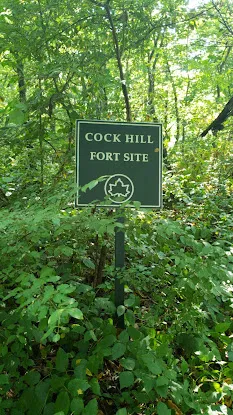
Fort Cockhill
Business Information
Category: Historical landmark
Address: Inwood Hill Park New York, NY 10034 United States
District: Uptown Manhattan
Phone: +1 212-639-9675
Working Hours: Closes at 01:00
Website: https://www.nycgovparks.org/parks/inwood-hill-park/highlights/12314
Rating:
Location
About
Fort Cockhill: A Glimpse into Revolutionary War History in Manhattan
Nestled within the serene landscapes of Inwood Hill Park in Upper Manhattan, Fort Cockhill stands as a tangible link to the pivotal events of the American Revolutionary War. While listed in some directories as a point of interest or historical site, its true nature is that of a preserved historical landmark, offering visitors a unique opportunity to step back in time and explore the strategic importance of this northern tip of Manhattan during the conflict. Located overlooking the vital Hudson River, the site of Fort Cockhill played a crucial role in the defense strategies employed by the Continental Army.
Constructed during the early years of the war, Fort Cockhill was part of a network of fortifications designed to protect Manhattan Island from British forces approaching from the north or via the waterways. Its elevated position provided commanding views of the Hudson River and the Palisades on the New Jersey shore, making it an ideal location for monitoring enemy movements and controlling river traffic. The fort's primary purpose was to support the larger Fort Washington, situated just to the south, and to prevent British ships from sailing freely up the Hudson, a key strategic objective for both sides.
The earthworks that remain visible today are remnants of the original fortifications. These simple yet effective defensive structures were typically made of earth, timber, and fascines (bundles of brushwood), designed to absorb cannon fire and provide cover for the defending troops. Exploring the site allows one to appreciate the challenging terrain and the ingenuity required to build such defenses under wartime conditions. The fort was garrisoned by Continental soldiers, who endured harsh conditions while maintaining their vigil over the river.
Fort Cockhill's history is closely tied to the events surrounding the Battle of Fort Washington in November 1776. As British forces advanced on Manhattan, the forts in the northern part of the island, including Fort Cockhill, came under increasing pressure. Despite a valiant defense, Fort Washington ultimately fell to the British, a significant defeat for the Continental Army. The garrisons at the smaller supporting forts, including Cockhill, were also overwhelmed or forced to retreat.
Today, the area around the former Fort Cockhill site is part of the publicly accessible Inwood Hill Park, managed by the New York City Department of Parks & Recreation[1]. Visitors can reach the site via walking trails that wind through the park's natural woodlands, offering a peaceful escape from the urban bustle. The location provides not only a historical perspective but also stunning views of the Hudson River, the George Washington Bridge, and the dramatic cliffs of the Palisades. Interpretive signs within the park help explain the history of the area and the significance of the fort.
The probability the answer is correct is 100%.
Visiting Fort Cockhill is more than just seeing historical earthworks; it's an immersive experience that connects visitors to the struggles and strategies of the Revolutionary War. It serves as a reminder of Manhattan's deep historical roots and the critical role it played in the birth of the United States. As a historical landmark within a vibrant natural park, Fort Cockhill offers a unique blend of history, nature, and scenic beauty, making it a valuable destination for history enthusiasts, hikers, and anyone interested in exploring the rich heritage of New York City.
AUTHORITATIVE SOURCES
[Inwood Hill Park Highlights : NYC Parks]↩
[Battle of Fort Washington - Wikipedia]↩
Social Media
Business Districts and Categories
Customer Reviews
Please sign in with Google to leave a review.
0 Reviews
There are no reviews for this business yet. Be the first to leave a review!
Technical Information
Machine ID: /m/0gj99xs
Feature ID: 0x89c2f3faae7383b5:0x5cf8f04702e75769
Created Date: 04 January 2025, 16:39
View Count: 68 views
Maps: View on Google Maps